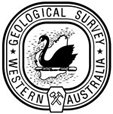CCFS participants
The new CCFS CoE builds on a world-class infrastructure base, and multiplies the capabilities of three internationally recognised centres of research excellence: Macquarie University (lead institution), Curtin University and the University of Western Australia. The Geological Survey of Western Australia is a Partner Institution and researchers from Monash University and the University of New South Wales are formally affiliated. Five overseas nodes led by Partner Investigators in France, China, Canada, Germany and the USA are contributing resources and provide access to a wide variety of expertise and instrumental capabilities. CCFS incorporates several pre-existing centres within the Administering and Collaborating Institutions: the GEMOC Key Centre (http//www.gemoc.mq.edu.au/) at Macquarie University retains its structure and is fully incorporated within CCFS; the research and strategic activities of CET (Centre for Exploration Targeting; http://www.cet.edu.au/) at the University of Western Australia lie within CCFS; and the activities of TiGeR (http://tiger.curtin.edu.au/) at Curtin University are also aligned with CCFS.
There is active national collaboration with state Geological Surveys, Geoscience Australia (GA), CSIRO, the Australian National University (RSES), Newcastle University, the University of Sydney, the University of Wollongong, the University of Adelaide and several major industry collaborators (national and global), across a broad range of projects related to the CCFS strategic goals. A distinctive feature of CCFS is the high level of active international collaborations and reciprocal links.
Collaborative research, teaching and technology-development links have been established with universities nationally and internationally and these are evolving as new alliances become relevant to the foundation research of CCFS and to new initiatives.

Administering Organisation
Macquarie University
Collaborating Organisations
University of Western Australia
Curtin University
Australian Partner
Geological Survey of Western Australia![]()
International Partners
CNRS and University of Montpellier, France
Institute of Geology and Geophysics, Chinese Academy of Sciences, Beijing, China
University of Maryland, USA
University of Saskatchewan, Canada
Bayreuth University, Germany
Chief Investigators
Professor Suzanne Y. O'Reilly - Director; Macquarie University
Professor Simon Wilde - Curtin University
Professor T. Campbell McCuaig - University of Western Australia
Professor William Griffin - Macquarie University
Professor Neal McNaughton - Curtin University
Professor Zheng-Xiang Li - Curtin University
Professor Mark Barley - University of Western Australia
Professor Simon Turner - Macquarie University
Associate Professor Norman Pearson - Macquarie University
Professor Martin van Kranendonk - University of New South Wales (from 2012)
Australian Partner Investigator
Dr Klaus Gessner - Geological Survey of Western Australia (from 2012)
International Lead Partner Investigators
Dr David Mainprice (Montpellier)
Professor Fuyuan Wu (CAS Beijing)
Professor Michael Brown (Maryland)
Professor Rob Kerrich (Saskatchewan)
Professor Catherine McCammon (Bayreuth)
A full list of CCFS participants is given in Appendices 3.
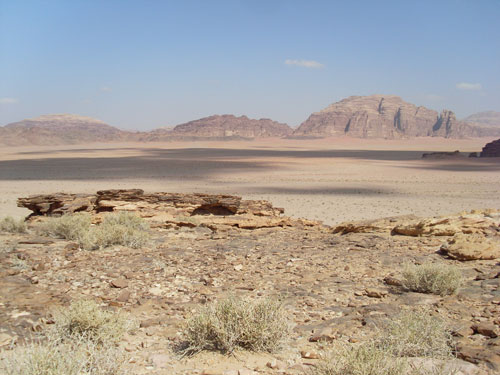
Red sandstone hills in southwest Jordan close to the border with Saudi Arabia , visited by Simon Wilde during the Jordanian-Egyptian Basement Evolution (JEBEL) field excursion in October 2011.
CCFS Future Fellows
The application for the CoE CCFS foreshadowed that such a Centre of Excellence would become an attractor for rising stars and research leaders in relevant disciplines and fields of interest. The success of CCFS participants in the two previous Future Fellow rounds emphasises this role of our Centre in recruiting high-flyers at early to mid-career levels. Four Future Fellows have projects relevant to CCFS goals as profiled below.
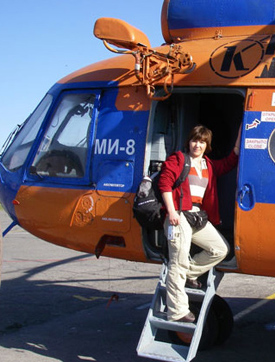 Dr Elena Belousova
Dr Elena Belousova
Elena started her research career working as a mineralogist in the Department of Geology at Kiev State University (1988-1995) after graduation from the same University in 1988. Her further research, following from her PhD work at Macquarie, has been instrumental in developing leading-edge geochemical and tectonic methodologies based on zircon geochemistry. This research provided a baseline for the development of the TerraneChron® methodology, where she was closely involved in the development of in situ U-Pb age dating of zircons using the laser-ablation microprobe ICPMS and in situ Hf-isotope analysis using the Nu Multicollector ICPMS. The award of an ARC-APD fellowship in 2003-2006 enabled her to concentrate on this research track. The Vice-Chancellor's Innovation Fellowship (2006-2008) was industry-oriented, but it allowed further research developments and gave an opportunity to extend her expertise beyond the initial focus on zircon, to a wider spectrum of minerals and analytical methods.
Elena's Future Fellow project is focused on the processes involved in crust-mantle evolution and their interaction throughout Earth's history. Are there any consistent differences in the evolution of different layers of the lithosphere: upper crust, lower crust and upper mantle? Was the evolution of the continental crust related to underlying mantle processes? This Future Fellowship project will use in situ chemical and isotopic microanalysis of the accessory minerals extracted from crustal and mantle rocks to answer these fundamental questions. It will contribute to new models for the timing of crustal formation and the tectonic and genetic links between Earth's crust and mantle. The results will be relevant to the localisation of a wide range of mineral resources.
Associate Professor Marco Fiorentini 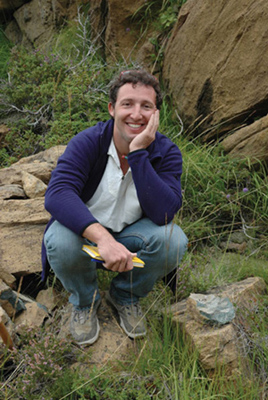
Marco Fiorentini received his PhD from the University of Western Australia in 2005. He subsequently has become a recognised authority on the genesis of Ni-Cu-PGE deposits. The implications of his studies for understanding the evolution of the early Earth's mantle, lithosphere and hydrosphere-atmosphere, have been recognised and published in international journals (Nature, Science). The keys to Marco's research success are his enthusiasm and his capacity to collaborate with the best national and international researchers in several fields, creating the necessary synergy to achieve ambitious research goals. In his research, a non-conventional "out of the box" approach is coupled with cutting-edge analytical techniques to generate new working hypotheses in highly controversial fields of both fundamental and applied research.
The title of Marco's Future Fellowship is "From Core to Ore: emplacement dynamics of deep-seated nickel sulfide systems". Unlike most mineral resources, which are generally concentrated in a wide range of crustal reservoirs, nickel and platinum are concentrated either in the core or in the mantle of our planet. In punctuated events throughout Earth history, large magmatic events have transported and concentrated these metals from their deep source to upper crustal levels. With this Fellowship, he will unravel the complex emplacement mechanisms of these magmas and constrain the role that volatiles such as water and carbon dioxide played in their emplacement and metal endowment.
The scientific program of this study aims at radically shifting the research focus on magmatic ore deposits and will address the key research breakthroughs that can provide a step-change in the exploration for nickel-sulfide systems in Australia and overseas. The study stems from a careful examination of the current state of knowledge and research focus on mineral systems associated with magmatic processes. This examination was undertaken in conjunction with the mineral industry, which outlined a substantial misalignment between academic research and industry needs.
 Dr Craig O'Neill
Dr Craig O'Neill
Craig O'Neill completed his BSc (Adv), and received the University Medal, at the University of Sydney. He subsequently went on to complete a PhD at the University of Sydney in 2004, on thermochemical convection on the Earth and planets. Craig was a postdoctoral researcher at Rice University, Houston, exploring mantle convection models incorporating volcanism, before coming to Macquarie on a Macquarie Research Fellowship in 2006. He was a finalist in the "Fresh Science" competition in 2006, and was selected The Australian newspaper's "Young Scientist of the Year" that same year. He was awarded a NSW "Young Tall Poppy" award in 2007. He was also awarded an ARC-APD in 2007 looking at the role of supercontinents in Earth's evolving mantle.
In 2011 Craig was awarded a Future Fellowship, looking at the role of serpentinisation in controlling the long-term fault strength of oceanic plate-boundary faults. Oceanic plate boundaries control the global tectonic engine, and their strength determines whether or not active tectonics is even possible. However, the rheology of oceanic faults is poorly understood, particularly the role of strength-limiting phases such as serpentinite minerals. The future fellowship project will look at one particular area of interest - the Hjort Trench, an area of incipient subduction, to understand the long term evolution of plate-bounding faults and how this feeds into the long-standing question of subduction initiation.
 Dr Sandra Piazolo
Dr Sandra Piazolo
Many large-scale geological processes, such as plate tectonics and mountain building, are controlled by the rate of flow of rocks. This "rheology" is fundamental, yet is difficult to determine for the complex, variable rock types of the lower crust. Sandra Piazolo's Future Fellowship project will use a novel cross-disciplinary approach combining field, laboratory and numerical techniques in order to constrain lower crustal rheology. The outcomes will have a profound significance, as the accuracy of the latest large-scale geodynamic models is dependent on the correct rheological constants. The resultant data will be implemented in advanced geodynamic models and applied to the important plate tectonic scenario of continental extension.
This project requires a sound understanding of the underlying physical and chemical processes. To translate this knowledge to large scale phenomena, numerical simulations at different scales need to be performed. Thus, the research field of the project lies between the disciplines of structural geology, metamorphic petrology and computational geoscience. In each of these fields Piazolo has made significant contributions throughout her research career. Her research path started as a metamorphic petrologist (Freiburg, Germany) and continued as a structural geologist during her PhD (Mainz, Germany). During her postdoctoral work she focused on the tectonometamorphic evolution of Archean and Proterozoic rocks of West Greenland as well as on applying material science principles and materials to geological questions (Liverpool, UK). She is well-known for her use of microstructural analysis of rocks and metals to derive deformation mechanism and rheology. She also has an international standing in numerical simulations of microstructures and extensive experience in field-based research on high grade rocks. Sandra has experience in leading international research efforts; for example the successful multi-disciplinary European project "Fundamentals of Substructure Dynamics", which brought together experts in experimental geology, computational geoscience, material science and field geology.
Early Career Researchers (ECR)
The second primary goal of CCFS (see above) concerns the recruitment, development and mentoring of Early Career Research (ECR) staff "for the development of the next generation of Australia's geoscientists".
A Government White Paper in 2010 "Meeting Australia's research workforce needs" stated that "There is a looming gap in the pool of potential leaders in geoscience research and training in Australia; the current crop of leaders is a senior generation, and there are few in the demographic down to people now in their 30s or younger. We need to bring some of this younger group along rapidly, and begin generating a new pool of potential leaders, to avoid a collapse in a research field that is essential to national wealth creation."
As part of the solution to this problem, the CCFS proposal specifically targeted funding toward several outstanding ECRs newly employed at the partner institutions. It also foreshadowed that "the employment of... Centre-funded postdoctoral fellows will bring in young people with targeted expertise and potential, and develop them into the next generation of leaders in research and training."
The initial awarded funding framework of CCFS resulted in a revision of the ECR recruitment capacity. However, the ARC provided an opportunity to apply for additional post-award funding dedicated to ECRs. The success of that application allowed CCFS to enhance the ECR training capability within CCFS. It also represents a strategic intention to further expand our network of overseas investigators, to further enhance strands of research that currently are under-represented in Australia. The post-award funding allowed the recruitment of four postdoctoral fellows on terms analogous to the DECRA grants. These positions within CCFS have been named "ECSTAR": Early Career Start-up Awards for Research. Two have commenced research in CCFS and two positions are under selection.
The following profiles present 2011 ECRs (including the two appointed ECSTARs in CCFS) and summarise their expertise and research areas.
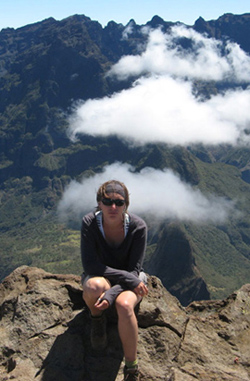
Dr Marion Grange completed her PhD, focused on understanding the origin and emplacement age of alkaline magmatic massifs in Portugal, in 2007 at the University of Nice-Sophia Antipolis (France). She moved to Perth in March 2008 to work at Curtin University, and joined the CCFS in early 2011. Marion's present research focuses on the early history of the Solar System. She is interested in providing better timing constraints on the early stages of differentiation and the early meteoritic impact history of Earth and Moon by studying the isotopic systems of ancient materials from both planetary bodies. Her recent work concentrated on careful textural characterisation and in situ geochemical and geochronological analyses of zircon and apatite grains from lunar impact melt breccias to resolve 'primary' magmatic characteristics of these grains from 'secondary' features created by impact events. This allows us to establish a precise chronological record of both magmatic and impact events on the Moon. Within the CCFS, she is working on characterising magmatic and alteration minerals and related fluids in Martian meteorites using a combination of high resolution imaging, chemical and isotope methods. This project aims at understanding fluid regimes in early planetary bodies and to better constrain the composition and origin of these fluids. She is also working on calibrating Raman spectroscopy for Carbon-isotope analysis of CO2, which will enable non-destructive measurements of δ13C in individual CO2 inclusions a few microns in size.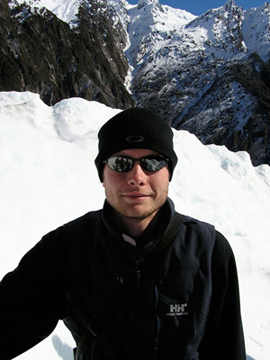
Dr Dan Howell is a postdoctoral research associate in CCFS working on the scientifically and economically valuable mineral, diamond. Diamonds are the product of fluids in the mantle and therefore the mineral and fluid inclusions they can contain represent some of the direct deepest samples available to study. Dan has obtained a very broad analytical and experimental background, and has applied many of these methods and techniques to the study of diamonds. Having developed a new spectroscopic technique during his PhD, he has developed a new method of processing the abundant data produced by infrared mapping to investigate the distribution and behaviour of impurities in diamonds. Combining this method with the abundant geochemical equipment available within the CCFS CoE is allowing Dan to investigate the specific growth conditions (i.e. pressure, temperature, chemistry and oxygen fugacity) of a special type of natural diamonds that have been an enigma for 50 years. He is also using his geochemical knowledge and experimental abilities to develop a new method for measuring the very low levels of trace elements found in natural diamonds using laser ablation mass spectrometry.
Dr Jin-Xiang Huang did her undergraduate study in the honour class of geology in China University of Geosciences,Beijing and was one of the top students in her class. Upon completion she comenced a PhD at GEMOC, Macquarie University andcompleted in December 2011; her thesis project was a study of the metasomatism and origin of xenolithic eclogites from Roberts Victor, South Africa. During her PhD study, she gained extensive experience working in clean labs and on state-of-the-art instruments to get accurate geochemical data on her samples; she was also trained to process the data effectively and to integrate awide range of information into one model. She discovered that mantlemetasomatism had completely 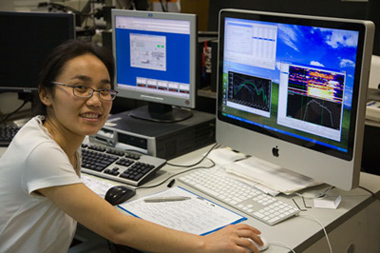 changed the petrography and chemical and isotopic compositions of most eclogites.This demonstrated that the evidence from metasomatised samples cannot be used to support the popular idea that they represent subducted oceanic crust, while the information from primary eclogites favored their origin from deep earth magmas.
changed the petrography and chemical and isotopic compositions of most eclogites.This demonstrated that the evidence from metasomatised samples cannot be used to support the popular idea that they represent subducted oceanic crust, while the information from primary eclogites favored their origin from deep earth magmas.
After her PhD, she joined CCFS as a postdoctoral research associate, working on Mg and O isotopes of mantle rocks (both eclogites and peridotites). Combining her geological and analytical background with the whole range of different geochemical facilities available within CCFS, she will investigate the behaviour of Mg and O isotopes in different mantle processes (e.g. magma crystallisation, mantle metasomatism). This will provide a better understanding of mantle processes and further constraints on geodynamics.
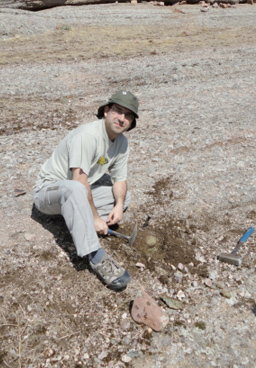
Dr José María González-Jiménez is a geologist/mineralogist specialising in the mineralogy and geochemistry of the Platinum-Group Elements (PGE), especially in ore deposits associated with mafic/ultramafic rocks. He took his PhD from University of Granada (Spain) in 2009, having investigated the mechanisms of concentration and remobilisation of PGE in ore deposits from ophiolite complexes in Cuba, Bulgaria and New Caledonia. His research is focused on the mineralogy and geochemistry of the PGE, to find out how these noble metals are concentrated into economic deposits in Earth's upper mantle and how they are re-mobilised during post-magmatic events. His work as a Research Fellow at CCFS has taken several new directions. One is the application of Re-Os isotopic systematics to the Platinum-Group Minerals (PGM), using in situ microanalysis by LAM-ICPMS; another is based on the analysis of trace-element patterns in chromite from different styles of magmatic deposits. Combining mineralogical, petrologic, geochemical, isotopic and thermodynamic approaches, he is modeling the mechanism(s) of magmatic concentration of the Platinum Group Metals and Chromium. This work is providing an improved explanation for the genesis and tectonic setting of PGE-bearing chromite deposits. Another relevant aspect of his work at CCFS is a statistical study of the size distribution of the PGM in different microstructural settings and the characterisation of their Os-isotope composition. This has lead to the discovery that the PGE can be re-mobilised/re-concentrated by the hydrothermal/metasomatic fluids that commonly affect lithospheric mantle rocks. This process also affects the Os-isotope signatures of Os-rich minerals, in contrast to accepted ideas.
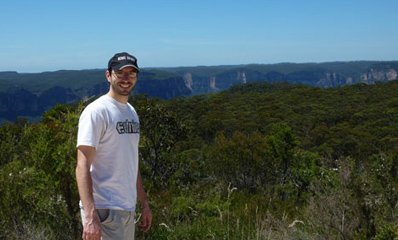 Dr Yoann Gréau joined GEMOC in 2007 as a PhD candidate (graduated 2011) after obtaining a Masters degree from the University of Montpellier II (France), where he trained in ultramafic petrology and geochemistry, studying ultra-refractory abyssal peridotites. During his PhD studies, he investigated the origin and history of eclogite xenoliths brought up from the lithosphere-asthenosphere boundary by kimberlitic magmas. His research focused on the petrology and geochemistry of the sulfide phases, looking at siderophile and chalcophile elements (e.g. Cu, Ni, Se, Te, PGEs and S isotopes). He also examined the relationships between microstructures and mineral geochemistry (e.g. REE, HFSE, LILE and O isotopes) of the main silicate phases, demonstrating strong links between mantle eclogites and metasomatic processes occurring within the sub-continental lithospheric mantle.
Dr Yoann Gréau joined GEMOC in 2007 as a PhD candidate (graduated 2011) after obtaining a Masters degree from the University of Montpellier II (France), where he trained in ultramafic petrology and geochemistry, studying ultra-refractory abyssal peridotites. During his PhD studies, he investigated the origin and history of eclogite xenoliths brought up from the lithosphere-asthenosphere boundary by kimberlitic magmas. His research focused on the petrology and geochemistry of the sulfide phases, looking at siderophile and chalcophile elements (e.g. Cu, Ni, Se, Te, PGEs and S isotopes). He also examined the relationships between microstructures and mineral geochemistry (e.g. REE, HFSE, LILE and O isotopes) of the main silicate phases, demonstrating strong links between mantle eclogites and metasomatic processes occurring within the sub-continental lithospheric mantle.
Yoann has recently joined the TerraneChron® team in CCFS, which uses a specifically developed methodology to study the evolution of the continental crust through time by using integrated in situ analysis of zircons for U-Pb ages and O and Hf isotopic composition. The team will benefit from his multi-system approach and his experience with in situ analytical methods.
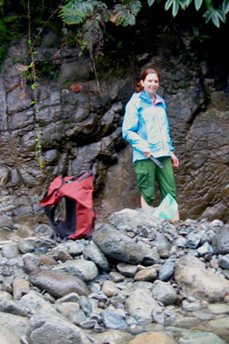
Dr Mary-Alix Kaczmarek joined CCFS in April 2011 as a postdoctoral research fellow. She graduated with a PhD from the University of Neuchâtel (Switzerland) in 2007, with a thesis focused on upper-mantle shear zones. After her PhD, she took a postdoctoral CNRS position at Géosciences Montpellier (France), working on the microstructures and geochemistry of mantle xenoliths from southeastern Algeria. She then moved to Curtin University (Perth) in 2010, and joined the CCFS in April 2011. The principal objectives of her work are to explore the relationships between deformation mechanisms and reactive fluid/melt transport. These factors have implications for the initialisation of shearing and on the underlying controls this has on the way tectonic plates deform. To study these processes she applies state-of-the-art micro-analytical techniques such as EBSD and LA-ICPMS to investigate the role that fluid/melt and mineral chemistry plays in the mechanical stability of the rock. Since 2011, her research has concentrated on peridotites from rifting and ocean-continent transition environments (Project 2b), and Martian meteorites (Project 7). She investigates the peridotites to constrain the interaction between deformation and fluid flow, with a special interest in the interaction between intragrain and intergrain deformation processes and chemical reactions associated with hydration of the mantle. The aim of the Martian study is to characterise the fluids and their interaction with minerals, and to obtain information on primitive mantle deformation mechanisms and processes.
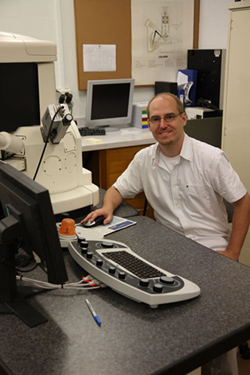 Dr Marek Locmelis joined the CCFS, as part of CET's research team on Magmatic Mineral Systems, to unravel the mysteries associated with the formation of nickel-sulfide ore systems in the deep lithosphere and metal and fluid transport processes in the Earth's mantle. Marek is currently based at Macquarie University as CET's eastern outpost.
Dr Marek Locmelis joined the CCFS, as part of CET's research team on Magmatic Mineral Systems, to unravel the mysteries associated with the formation of nickel-sulfide ore systems in the deep lithosphere and metal and fluid transport processes in the Earth's mantle. Marek is currently based at Macquarie University as CET's eastern outpost.
Marek obtained his Diploma in Geosciences at the University of Hannover in Germany in 2005. In collaboration with the German Federal Institute for Geosciences and Natural Resources, he studied oxidised platinum ores of the Great Dyke in Zimbabwe to contribute to the development of new beneficiation techniques. Since then he has specialised in linking the academic and industrial worlds. Shortly after completing his Diploma degree, Marek moved to Sydney to undertake a PhD at Macquarie University as a joint PhD student with the CET. He investigated the mechanisms of platinum-group element (PGE) fractionation in mafic and ultramafic melts. He also developed ways to apply the PGE signatures of specific minerals to the exploration for komatiite-hosted nickel deposits.
After the completion of his PhD, Marek joined the CET where he is now involved in a CCFS project that investigates the genesis of deep-seated magmatic nickel-sulfide deposits. Most world-class nickel deposits formed relatively close to the Earth's surface, but a few uncommon and small deposits originated deep in the Earth, up to 200 km below the surface. This project combines experimental studies with novel analytical approaches to investigate how these deep deposits form, with a special focus on metal sources and transport mechanisms in the deep lithosphere.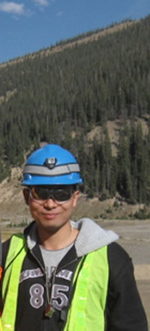
Yongjun Lu completed his PhD at the University of Western Australia's Centre for Exploration Targeting (CET). Before coming to CET, Yongjun had obtained B.S. (2005) at China University of Geosciences (Beijing) and his M.S. (2008) at Peking University.
Yongjun's expertise lies in geochronology, igneous petrology, geochemistry and economic geology. During his PhD, he studied the tectonic setting, magmatic evolution and metallogenesis of Paleogene potassic intrusions in western Yunnan, SE Tibetan Plateau. His key research interests include: (a) in situ elemental and isotopic analysis, e.g. combining U-Pb, oxygen and hafnium isotopes to study granite petrogenesis, targeting fertile porphyry intrusions and mapping 4D lithospheric architecture; (b) origin and evolution of mafic and felsic magmas/metals/fluids from porphyry Cu systems in accretionary and collisional orogenies from the Archean to the Cenozoic; (c) experimental constraints on the genesis of K-adakite and associated post-collisional porphyry Cu (Mo-Au) deposits from the Tibetan Plateau; (d) the relationship between Au-rich felsic porphyry, K-mafic melt, and mantle metasomatism, and its application in regional province targeting in Au exploration.
Yongjun joined CCFS as a research associate on the Foundation Project "4D lithospheric Evolution and Controls on Mineral System Distribution: The Western Superior-Yilgarn Comparison", lead by Professor T. Campbell McCuaig. Together with Professor Marco Fiorentini and Dr Robert Loucks, Yongjun has also initiated a pilot study involving trace-element analysis of experimental melts of amphibolites, with the aim of understanding the genesis of ore-forming hydrous adakitic melts. This pilot study will contribute to the CCFS Foundation Project "Metal Sources and Transport Mechanisms in the Deep Lithosphere" lead by Professor Marco Fiorentini.
Dr Michael Turner arrived at Macquarie University in September 2009, assisted by a three-year Post-Doctoral Fellowship from the New Zealand Foundation of Science and Technology. He graduated with a PhD from Massey University (New Zealand) in 2009, having studied physical volcanology and magma genesis of Mt. Taranaki (New Zealand). At Macquarie, he is using short-lived U-series isotopes to determine the timescales of magma degassing events. He will supplement the isotopic research by in situ analysis of water in pyroxene phenocrysts. Pyroxenes crystallise over a large range of magmatic temperatures and pressures, and can potentially record the water contents of their host magmas during differentiation. The results will help understand the driving forces behind explosive volcanic eruptions.
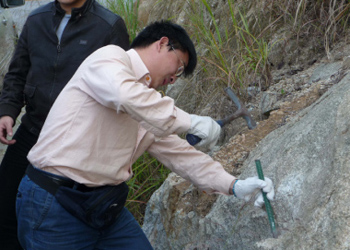 Dr Xuan-Ce Wang
Dr Xuan-Ce Wang
His primary role in CCFS is to examine possible linkages between plate tectonics and mantle plume dynamics, to test the effects of deep water cycling on the thermal evolution of the Earth's mantle, and to identify evidence for plume-related magmatism in Australia and other continents.

 ARC Centre of Excellence for Core to Crust Fluid Systems
ARC Centre of Excellence for Core to Crust Fluid Systems
